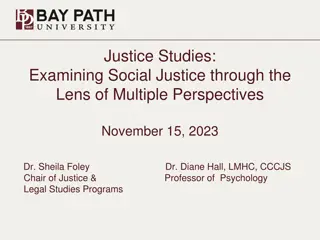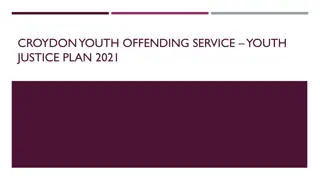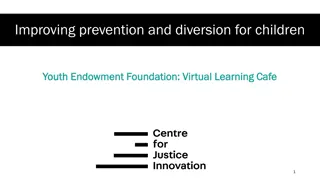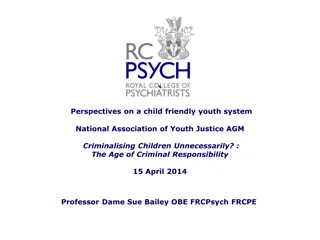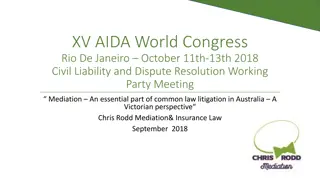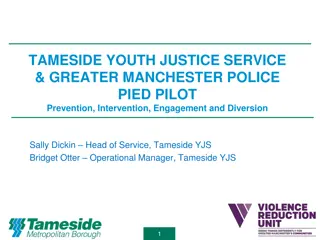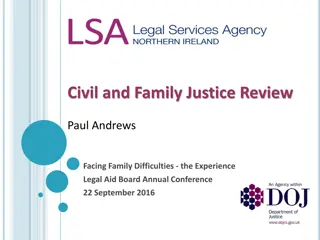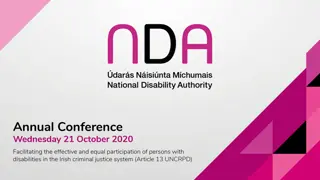Youth Justice System Challenges and Solutions in Victoria
In Victoria, entrenched disadvantage contributes to youth offending rates and high rates of detention. The youth justice system faces challenges such as the overrepresentation of certain postcodes in prison admissions and the increasing number of unsentenced young people in detention. Key principles emphasize addressing root causes, prevention, rehabilitation, and avoiding unnecessary detention. Recommendations include reducing reliance on youth prisons, reforming culture, and reinvesting in community services.
Download Presentation

Please find below an Image/Link to download the presentation.
The content on the website is provided AS IS for your information and personal use only. It may not be sold, licensed, or shared on other websites without obtaining consent from the author.If you encounter any issues during the download, it is possible that the publisher has removed the file from their server.
You are allowed to download the files provided on this website for personal or commercial use, subject to the condition that they are used lawfully. All files are the property of their respective owners.
The content on the website is provided AS IS for your information and personal use only. It may not be sold, licensed, or shared on other websites without obtaining consent from the author.
E N D
Presentation Transcript
Julie Edwards CEO Jesuit Social Services
Entrenched disadvantage In Victoria 6 per cent (42) of postcodes accounted for half of all prison admissions (DOTE 2015) 25 per cent of children on youth justice orders in 2010 came from 2.6 per cent of Victorian postcodes
Youth offender rate - Victoria 3,000.0 2,800.0 2,600.0 2,400.0 2,200.0 2,000.0 1,800.0 1,600.0 1,400.0 1,200.0 1,000.0 2009-10 2010-11 2011-12 2012-13 2013-14 2014-15 2015-16
Too many children and young people on bail The number of unsentenced young people in detention in Victoria has doubled over the past 5 years 80 per cent of young people in detention are now on remand We must continue to ensure that children and young people are not unnecessarily detained while unsentenced A range of evidence-based alternatives to youth custodial remand must be introduced or expanded, particularly covering out-of-hours support.
Key principles of youth justice Address the underlying causes of crime Invest in prevention and early intervention Divert and rehabilitate A strong network of support and accountability Ensure young people on remand are not unnecessarily detained Detention as a last resort
Age of criminal responsibility: international comparison Source: Hazel 2008, Cross-national comparison of youth justice, Youth Justice Board for England and Wales AUS NZ CAN ENG USA** FRA GER SWE NED CHN JPN 10 10-14* 12 10 6-12 13 14 15 12 14 14 Four R s of Closing Youth Prisons REDUCEthe pipeline into youth prisons REFORMthe culture that wrongly assumes locking up kids makes us safer REPLACEyouth prisons with small, homelike facilities because youth prisons don t work and harm young people REINVESTsavings into a range of community services, supports and opportunities
New youth prison Due process? Lack of consultation with sector and experts Significant cost implications Victoria is not following best practice
Non-negotiables under threat No child in an adult prison Detention as a last resort Child/youth specific response (do not treat as adults) Dual track Judicial discretion






